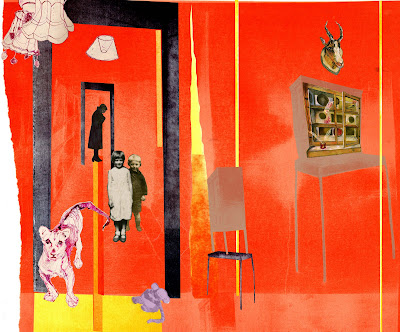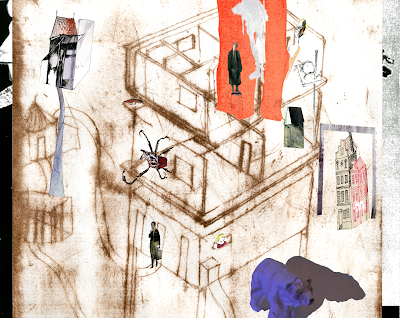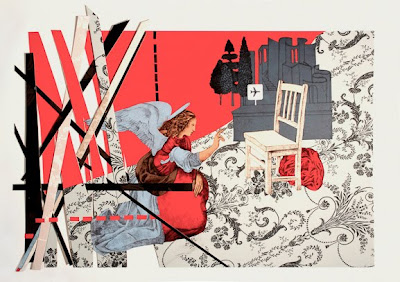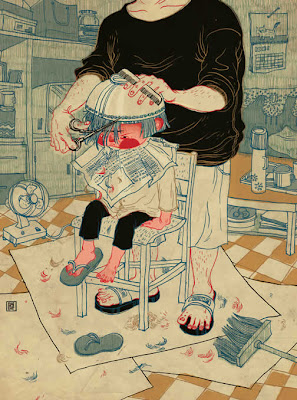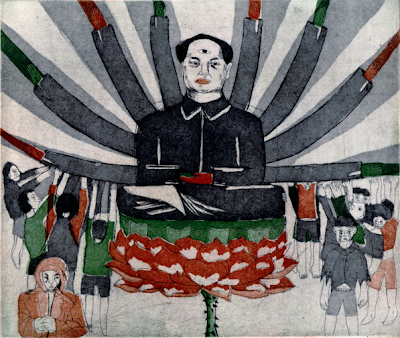

I received a prompt reply from Victo, whose work I love. and she was kind enough to give me some advice on my work, and enlighten me on her working process. I sent her the above image. Here is the transcript of her advice.
I really like the montage, the otherwordly colours and perspective contributed to a mysterious vibe. It's also smart of you to use large area of one dominating color, (the yellow) to tie all the different elements together. Your hand drawing has a lot of personality too.
The weakness of the piece for me is the composition and lack of focus. All the elements are in similar size and value structure, so there's not really a visual hierarchy - the eyes keep travelling from element to element but don't know where to look first or to stay. This may hinder getting across. Think of making illustration as directing a play - there are the main characters, side-kicks and props etc. If each person/thing is equally important, the audience may be confused.
Also, the circular composition makes the centre of the page look really import, yet there's nothing there ...
I hope this helps! Good luck with everything!
Best,
Victo.
The top image is one of Victo's, which can be seen on her blog, where she is generous to give her working process and also I like it that she includes the story and the process of thinking before she arrives at her final image. Its a good learning experience in that way. Victo's natural drawing and compositional and also interpretation skills are immense, I think, and I learn a lot from looking at her work.






